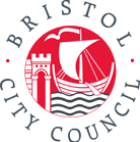First aid 'could help ease the pressure on A&E' according to research
New research commissioned by British Red Cross and led by Dr Julie Mytton at UWE Bristol shows that over a third of people who attend accident and emergency departments were seeking help because they were 'worried and didn't know what to do'.
- 24th August 2017
New research commissioned by British Red Cross and led by Dr Julie Mytton at the University of the West of England (UWE Bristol) shows that over a third of people (34.1 per cent) who attend accident and emergency departments were seeking help because they were ‘worried and didn’t know what to do’.
The survey of people using A&E, conducted by the UWE Bristol and the University of Bristol, found the most common reasons for attending were pain, falls, and other types of accidents resulting in minor injuries. The management of fever in children was another common reason for seeking help.
Healthcare workers interviewed for the study suggested that more patients could help themselves with first aid, for example, by taking simple medicines to reduce pain or fever. Some health workers felt that patients were not taking medication – or that parents were avoiding giving pain relief to children – due to a belief that doctors need to witness an illness at its worst point.
More than half (58.5 per cent) of patients seek advice before attending A&E, mostly from their GP surgery (18.2 per cent) or from relatives (11.9 per cent). People interviewed for the survey expressed a desire to use A&E services appropriately but found it difficult to know whether a health problem was severe enough to need urgent care.
Dr Julie Mytton, Associate Professor for Child Health at UWE Bristol, said:
“The people we spoke to often found it difficult to know when a problem was bad enough to ask for help, as well as being unsure of the best place to go to get that help. Many people knew that A&E departments were busy and wanted to avoid adding to that pressure if they could.”
Joe Mulligan, British Red Cross head of first aid education, said:
“The research shows that patients are seeking advice before attending A&E, which shows how difficult it is for people to work out which service best suits their needs. What’s worrying is that there is a lot of confusion, with many people unsure how to correctly assess their health issue and unable to navigate the health system accordingly. First aid education could help equip people with basic skills to both identify and relieve symptoms, assess the level of severity and know where best to seek help.
“Clearer public information and first aid education could help people to access the right type of care at the right point in time – which could ease some of the pressure on A&E, and reduce patient suffering.”
The healthcare professionals in the study identified seven groups of patients who use A&E frequently and could potentially benefit from first aid interventions:
- Patients with long-term health conditions, including mental illness
- Children / parents of young children
- Older people, especially those who are frail or have multiple health needs
- People who use substances
- People referred to A&E by their employer or a first-aider at work
- People receiving health and social care at home or in community settings
- The general public experiencing self-limiting infections and minor injuries
Mr Mulligan said:
“Ultimately we would like everyone to have the opportunity to learn first aid at key stages throughout their lives, starting at school. This would help to equip a generation of people with the first aid skills they need to help in an emergency.”
The report ‘The role of first aid education to support people attending urgent care services’ is accompanied by a summary report by British Red Cross called ‘Easing the pressure on A&E: Could first aid education help?‘
Access the full report and summary.






